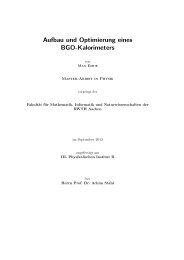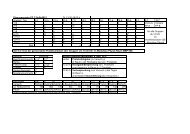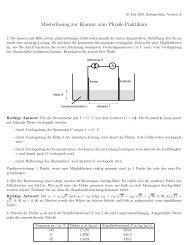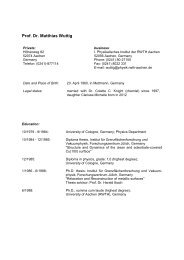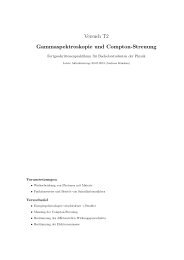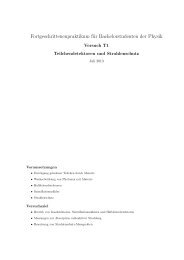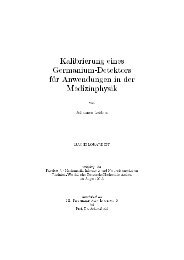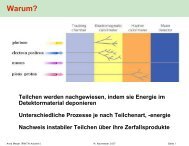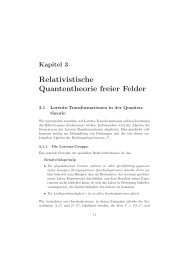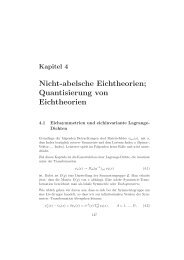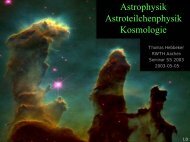Workshop book - Physikzentrum der RWTH Aachen - RWTH Aachen ...
Workshop book - Physikzentrum der RWTH Aachen - RWTH Aachen ...
Workshop book - Physikzentrum der RWTH Aachen - RWTH Aachen ...
Create successful ePaper yourself
Turn your PDF publications into a flip-book with our unique Google optimized e-Paper software.
Talks Tuesday February 5<br />
Generation and Detection of Quantum Coherence and Entanglement with<br />
Quantum Dots<br />
Seigo Tarucha, University of Tokyo, Japan<br />
Generation and detection of quantum coherence and entanglement is the core<br />
of quantum information processing. In this talk I will discuss new approaches<br />
to manipulate these concepts for electrons in semiconductor nanostructures.<br />
We have recently developed a two-path interferometer consisting of an<br />
Aharonov-Bohm ring connected to two tunnel-coupled quantum wires [1].<br />
Conventional AB rings are connected to two terminals and therefore suffer<br />
from phase rigidity which fixes the phase of AB oscillations at either 0 or<br />
π at zero-magnetic field. On the other hand, our interferometer operating<br />
in the non-adiabatic transport through the tunnel coupled wire does not<br />
suffer from the phase rigidity. We electrically control the dynamical phase<br />
through the AB ring and apply this technique to achieve full electrical control<br />
of a flying charge qubit defined by the presence of electron in either<br />
part of the two paths. We also use a similar interferometer but having a<br />
quantum dot in one of the two AB ring arms to detect the transport phase<br />
through the dot. We observe a well-defined π/2 phase through the dot when<br />
the dot is in the Kondo regime.<br />
The concept of non-local entanglement is well established for correlated<br />
photon pairs, but not yet for electrons in solid state systems. We have<br />
studied non-local entanglement using double dot Josephson junctions. The<br />
splitting of Cooper pairs into both dots may contribute to generate supercurrent,<br />
because Cooper pair tunneling through the same dot is strongly<br />
suppressed by the electron-electron interaction [2]. We observe the supercurrent<br />
depending on the double dot charge state and discuss the contribution<br />
from the split Cooper pair tunneling to the supercurrent.<br />
[1] M. Yamamoto et al. Nature Nanotechnology, 7, 247 (2012).<br />
[2] Y. Kanai et al. Appl. Phys. Lett. 100, 202109 (2012).<br />
44





